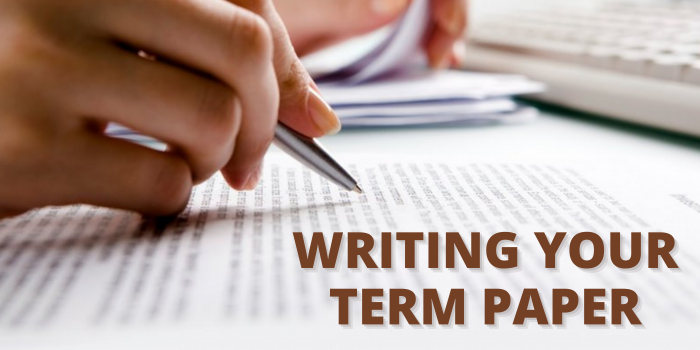One of the most common requirements when a semester ends in college is writing a term paper. If you’re already a senior, you might already be familiar with it or even mastered the art of writing such. However, for many, this continues to be a struggle.
What is a Term Paper and what is its purpose?
A term paper is a form of academic paper which may take a report or a research format. It is usually assigned by teachers in school and colleges to their students as a form of evaluation of how in-depth the students have understood the lessons of the current semester or term, hence, TERM paper.
Term papers from different courses or subjects may differ in terms of formats but they are generally research-intensive in nature however, these require a shorter amount of time than research papers and thesis papers. A student picks a topic or issue (within the scope of the subject’s lessons) to be investigated or studied.
To further understand how to write a term paper for your course, here are the steps, tips, and general parts which you can use as a guide:
Choosing a Topic
You cannot start your term paper without a topic to talk about. In choosing your topic, try to find an issue that makes you interested and excited to explore. Most term papers will be based on the lessons discussed in your course within which the paper is required. Make sure that your topic is not too broad or generalized so you wouldn’t have a hard time gathering your data and proving too many points.
Here’s a tip!
Aside from taking an exciting topic, you may start from choosing from a broader topic and then, try narrowing it down to a more specific one. Consulting your teacher will greatly help pave the way to starting your study. When you start formulating your problem, consider it in the form of a question to help you focus.
Doing Research
After choosing your topic, you must get to know more about it. This is so you can relay the information well when you start drafting and so you have an initial idea of the flow of your paper. This is also the part when you spend most of your time at the library if online resources will not be enough. The most important part in doing research is to pick trustworthy resources.
Here’s a tip!
To effectively do your research, it is advised to use primary sources as much as possible. Great primary resources include books, journals, and government publications. Most of these materials are often found in the library. Search for the most recent studies first. It is also helpful to organize your resources by creating systems for taking notes and keeping a bibliography.
Writing your Thesis Statement
A thesis statement will serve as a “logical center and a roadmap” of your paper. This summarizes your argument on your chosen topic or problem in one sentence so, it is one of the most crucial parts in writing a term paper. At the end of writing the paper, it will either prove or reject this statement depending on the gathered data.
Here’s a Tip!
It is important that your thesis statement must be specific and clear on your position regarding the topic. It would be helpful if you also state your reason behind choosing the position.
Creating an Outline
Creating an outline will guide you on your term paper writing. You can always check on it anytime whenever you feel lost in the in between and will give you a sense of direction.
Here’s a tip!
When creating an outline, firmly establish your chosen topic and why you chose it, state why the research material is relevant, establish your thesis statement, and determine the organization plan of your paper. Aside from choosing the title and establishing your thesis statement, here are the parts which you need to include in your term paper:
- Introduction – where your thesis statement, objective, and how you will approach the research and analysis part of your paper is found.
- Body – where you comprehensively discuss the sources of your research and make your analysis
- Conclusion – where you give a summary of the information you have gathered including your analysis. This is also where you discuss your findings and state the results of the research process.
- References – contains the bibliographic list or citations of the resources you used according to the agreed referencing style.
Writing your Draft
Do not be pressured when you fist start writing your draft. It doesn’t have to be already perfect so don’t obsess on correcting every mistake. The purpose of writing the draft is to finally put everything together to get a look at the flow of your paper. If given the time, consult with your professor and let your draft be corrected.
Here’s a tip!
Consider having two aspects when writing your arguments. You may choose to focus on a single main issue and analyze it through different point of views. You may also try to have 3 supporting arguments with the third point being an alternative perspective.
Editing & Proofreading
This will serve as the final step in writing your paper. After several corrections, you can now add the final touches to your paper. These are the reviewing of the spellings, grammar, word choice, style, and sentence structure.
Here’s a tip!
To properly see errors, take a break after writing the draft before you proceed with your proofreading. This will give you a fresh look on your paper and will help you realize errors better and see possible things which need revision. Reading aloud can also help find your mistakes.
Now that we’ve given you ideas on how to write your term paper better, are your keyboards ready? Just do not forget to properly cite your sources!
Links to resources and further reads:

